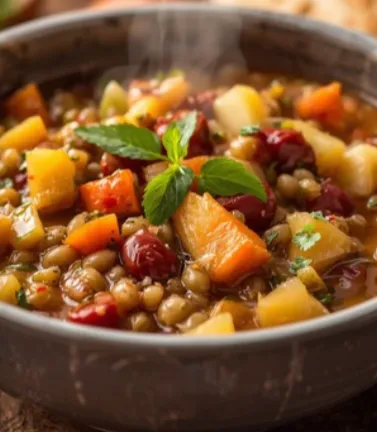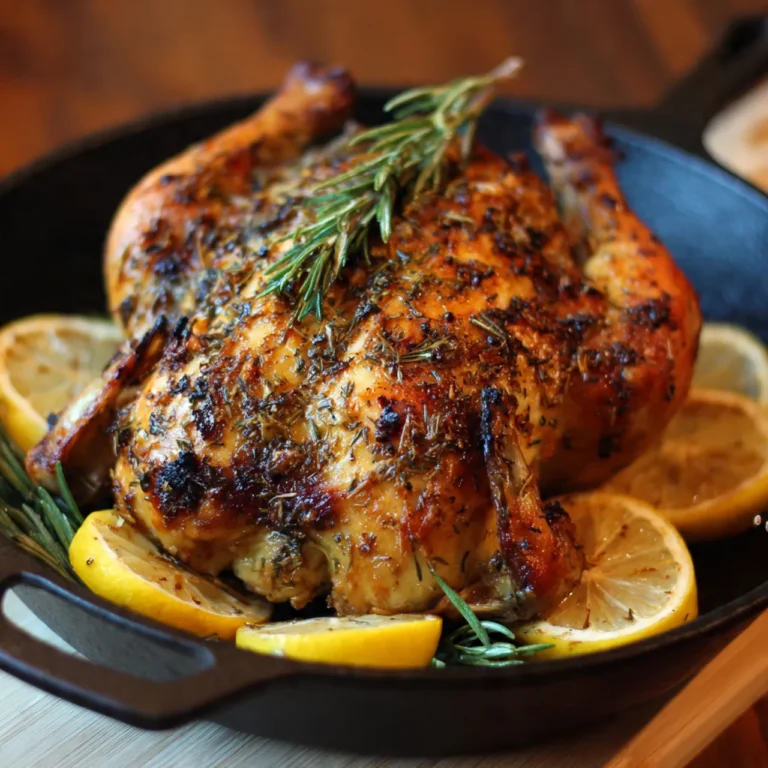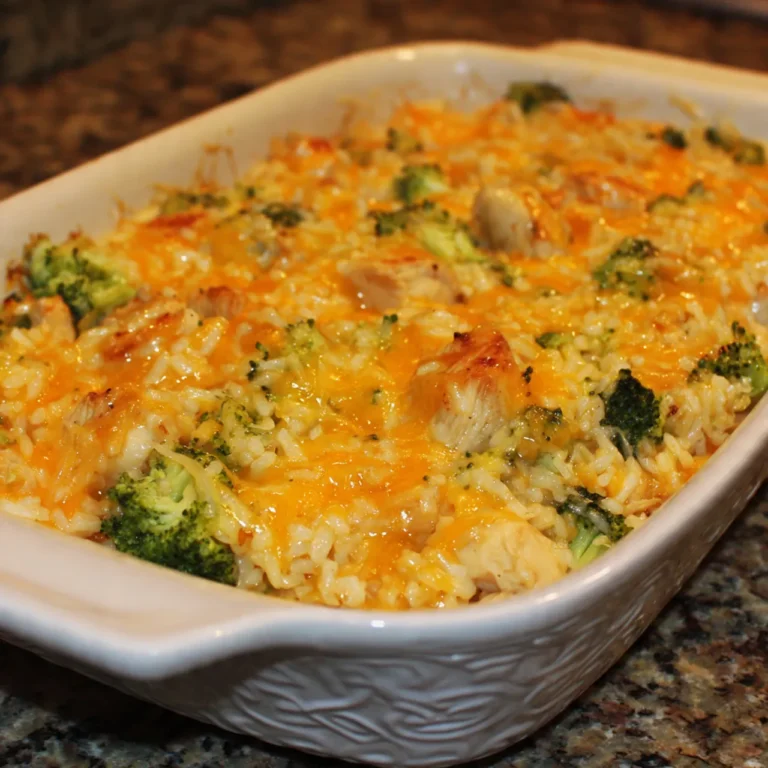When it comes to comfort food that is both nourishing and satisfying, few dishes can rival a hearty lentil and vegetable stew. Packed with plant-based protein, fiber, and an abundance of vegetables, this dish is the perfect balance of flavor, health, and simplicity. Whether you’re cooking for a weeknight dinner, preparing meals ahead of time, or looking for a cozy dish to serve family and friends, this stew checks all the boxes.
In this comprehensive guide, we’ll dive deep into everything you need to know about lentil and vegetable stew: its nutritional benefits, how to make the perfect version at home, recipe variations, cooking tips, storage ideas, and even cultural influences. By the end, you’ll not only have a foolproof recipe but also an appreciation for why this dish has stood the test of time as a staple in kitchens worldwide.
Why Choose Lentil and Vegetable Stew?
- Nutrient-Dense and Filling
Lentils are an excellent source of plant-based protein, making this stew ideal for vegetarians, vegans, or anyone looking to cut down on meat. Combined with fiber-packed vegetables, it creates a filling meal without being heavy. - Budget-Friendly
Lentils are affordable and widely available. You can make a large pot of stew to feed a family or have plenty of leftovers for the week without spending much. - Easy and Customizable
This recipe can be adapted with seasonal vegetables, different spices, or even grains like rice and quinoa. It’s flexible, forgiving, and easy to personalize. - Comfort Food with Health Benefits
Unlike many comfort dishes that are calorie-heavy, lentil and vegetable stew provides warmth and satisfaction without compromising your health goals.
The Nutritional Powerhouse Behind the Ingredients
Lentils
Lentils are small legumes that pack a powerful punch. A single cup of cooked lentils contains around 18 grams of protein and 15 grams of fiber. They are also rich in iron, folate, and magnesium. These nutrients support energy production, digestion, and heart health.
Vegetables
From carrots and celery to spinach, zucchini, and tomatoes, vegetables in the stew contribute antioxidants, vitamins, and minerals that boost immunity and overall wellness.
Herbs and Spices
Garlic, cumin, paprika, thyme, and bay leaves are commonly used to enhance the flavor. Beyond taste, these spices contribute anti-inflammatory and digestive benefits.
Healthy Fats
Using a drizzle of olive oil not only deepens the flavor but also adds heart-healthy monounsaturated fats.
Step-by-Step Recipe: Classic Lentil and Vegetable Stew
Ingredients (Serves 6)
- 2 tablespoons olive oil
- 1 large onion, diced
- 3 cloves garlic, minced
- 3 medium carrots, sliced
- 2 celery stalks, chopped
- 2 medium potatoes, diced
- 1 zucchini, chopped
- 1 red bell pepper, diced
- 1 cup dried green or brown lentils, rinsed
- 1 can (14 oz) diced tomatoes
- 6 cups vegetable broth
- 2 teaspoons cumin
- 1 teaspoon smoked paprika
- 1 teaspoon dried thyme
- 2 bay leaves
- Salt and pepper to taste
- 2 cups spinach or kale (optional, added at the end)
- Fresh parsley for garnish
Instructions
- Sauté the Base
Heat olive oil in a large pot. Add onion, garlic, carrots, and celery. Cook until softened, about 5 minutes. - Add Potatoes and Spices
Stir in potatoes, zucchini, and bell pepper. Add cumin, paprika, thyme, and bay leaves. Cook for 2 minutes to release the aromas. - Incorporate Lentils and Tomatoes
Add lentils and diced tomatoes. Stir well. - Pour in Broth
Add vegetable broth, bring to a boil, then reduce heat and let simmer for 35–40 minutes until lentils are tender. - Finish with Greens
Stir in spinach or kale and cook for 2–3 minutes until wilted. - Season and Serve
Remove bay leaves, adjust salt and pepper, and garnish with fresh parsley before serving.
Cooking Tips for the Best Lentil and Vegetable Stew
- Choose the Right Lentils
- Green or brown lentils hold their shape well in stew.
- Red lentils break down faster and make the stew creamier.
- Don’t Skip the Sauté
Cooking onions, garlic, and spices at the beginning helps build a flavorful base. - Layer Flavors
Add spices early, then taste and adjust at the end for depth. - Texture Balance
If you like a thicker stew, blend a small portion and return it to the pot. - Batch Cooking
This stew tastes even better the next day, making it perfect for meal prep.
Variations of Lentil and Vegetable Stew
- Mediterranean-Style Stew
Add olives, sun-dried tomatoes, and oregano for a Mediterranean twist. - Spicy Indian-Inspired Stew
Incorporate curry powder, turmeric, and coconut milk for a fragrant dish. - Rustic French Stew
Use herbes de Provence, leeks, and white wine for a French countryside feel. - Protein Boost
Add chickpeas or white beans for an even heartier meal. - Grain-Enhanced Stew
Stir in cooked quinoa, barley, or brown rice for extra texture and nutrition.
Pairing Ideas
- With Bread: Serve with crusty sourdough or whole-grain bread.
- Over Grains: Spoon the stew over quinoa, rice, or couscous for a full meal.
- As a Side: Pair with a fresh green salad for balance.
Storage and Meal Prep Tips
- Refrigeration: Store in an airtight container for up to 5 days.
- Freezing: Freeze portions for up to 3 months. Thaw overnight in the fridge before reheating.
- Reheating: Warm on the stovetop with a splash of broth or water to revive consistency.
Cultural Roots of Lentil and Vegetable Stew
Lentil stews have a long history across cultures:
- Middle Eastern: Lentil soups and stews are staples, often flavored with cumin and coriander.
- Indian: Dal (lentil stew) is a cornerstone of Indian cuisine with endless variations.
- European: From French lentil soups to Italian minestrone with lentils, Europe embraces this humble legume.
- North African: Lentil stews often include spices like cinnamon, harissa, and preserved lemon.
This diversity proves the versatility of lentils and how each culture adds its unique touch to a universally loved dish.
Health Benefits of Lentil and Vegetable Stew
- Supports Heart Health
High fiber and antioxidants reduce cholesterol and support cardiovascular health. - Aids Digestion
Lentils and vegetables provide prebiotic fiber that nourishes gut health. - Boosts Energy
Iron-rich lentils prevent fatigue and support oxygen flow. - Weight-Friendly
Low in fat but high in protein and fiber, this stew promotes satiety. - Plant-Based Protein Source
Essential for vegetarians and vegans seeking balanced nutrition.
Common Questions About Lentil and Vegetable Stew
1. Can I use canned lentils instead of dried?
Yes, but reduce cooking time since canned lentils are already tender.
2. Can I make it in a slow cooker or Instant Pot?
Absolutely. Slow cook on low for 6–8 hours, or use pressure cooking for 15 minutes.
3. How do I thicken my stew?
Mash some of the lentils or blend a portion for a creamier consistency.
4. Is lentil stew gluten-free?
Yes, naturally gluten-free as long as no gluten-containing ingredients are added.
Conclusion
A bowl of lentil and vegetable stew is more than just food—it’s nourishment for the body and comfort for the soul. Affordable, healthy, versatile, and endlessly customizable, it’s the kind of dish that brings people together around the table. Whether you stick to the classic recipe or explore variations inspired by different cuisines, this stew is guaranteed to become a staple in your kitchen.






